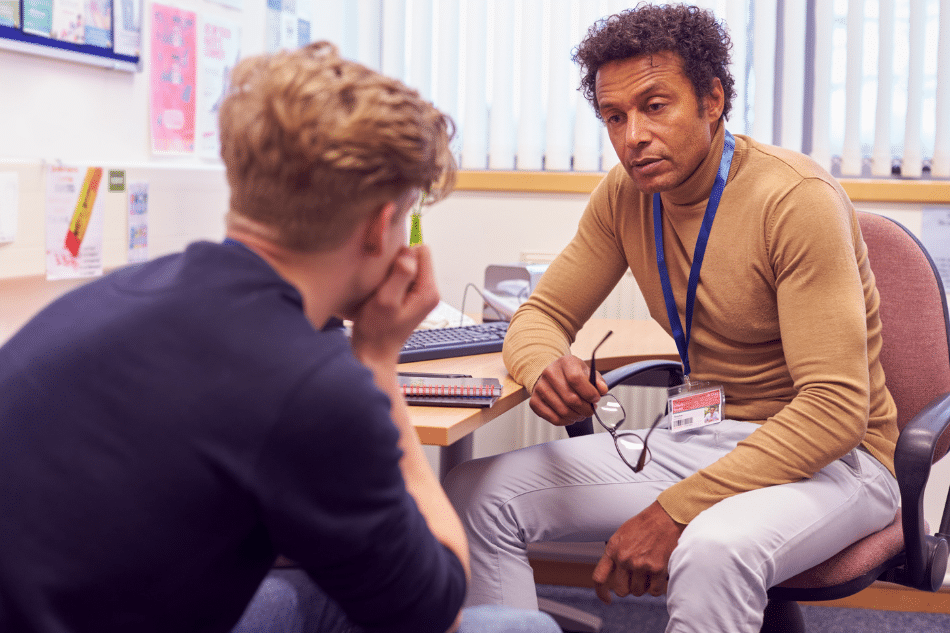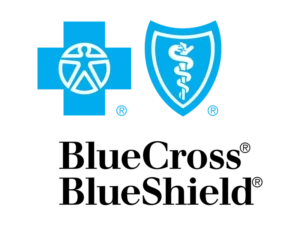What Is a Nervous Breakdown?: Causes, Signs, & Treatment for Youth Mental Health Crisis

Adolescents today are under more pressure than ever, and many are quietly reaching their breaking point. For instance, research shows that 30% of teens will experience an anxiety disorder, and 20% will experience depression.¹,²
What we’re seeing isn’t just stress. It’s part of a broader youth mental health crisis, where emotional and psychological strain begins to overwhelm a teen’s ability to cope.
The term “nervous breakdown” isn’t a clinical diagnosis, but it’s often used to describe what happens when internal pressure builds beyond a teen’s capacity to function. In many cases, it’s the body’s way of saying “enough” – a collapse after spending too long in survival mode.
Without support, these moments can spiral into longer-term mental health issues, but with the right kind of professional care, teens can begin to recover. If you’re worried about your health or that of a loved one, this guide can help, exploring:
- What a nervous breakdown is
- How to recognize what triggers a mental breakdown
- How a nervous breakdown is treated
- How Mission Prep can help with adolescent breakdown recovery

What Is a Nervous Breakdown?
A nervous breakdown is a point of psychological overload where a teen can no longer function as they normally would. In mental health terms, it’s often the result of prolonged stress or trauma pushing the nervous system into collapse. For adolescents, this can look like:
- Withdrawal
- Emotional shutdown or outbursts
- Sudden inability to cope with everyday demands
Neurologically, a teen nervous breakdown reflects a state of chronic activation in the brain’s stress response system. When the amygdala is overactive and the prefrontal cortex is under-functioning, teens may struggle to make decisions, regulate emotions, or even speak clearly.³ Additionally, cortisol levels remain high, sleep suffers, and social cues may feel overwhelming. Eventually, the system gives out.
Rates of adolescent mental health struggles are rising. According to the CDC, 57% of U.S. teens report feeling “persistently sad or hopeless.”⁴ When this emotional load goes unchecked, it can lead to psychological distress in adolescents that builds to a tipping point.
The brain is still developing in the teen years, but teens today often carry more than they’re physically equipped to process.⁵ Academic pressure, social media, trauma, and ongoing uncertainty can all contribute to mental overload in teenagers. And while some manage to mask it, others might reach a breaking point where support is urgently needed.
Understanding nervous breakdowns for youth means looking beyond the surface and understanding that it’s a stress response that’s gone unbuffered for too long. When it comes to treatment, emotional overload responds to environments that restore balance rather than demand performance. For this reason, a calm structure helps teens re-regulate.
Teen Breakdown Symptoms and Treatment
A teen doesn’t have to say “I’m overwhelmed” to be struggling. In many cases, the signs of a breakdown are subtle at first. It might show up as missed homework, sleep changes, or growing irritability. But over time, these cracks widen. In fact, what might look like laziness or defiance could be a nervous system struggling to keep up.
The following information covers teen mental breakdown signs to help raise awareness of these symptoms.
Teen Mental Breakdown Signs
How teens experience breakdowns can vary, but certain red flags are common. For instance, some teens might become agitated and reactive, while others could disconnect completely. Many might alternate between the two. What’s important is recognizing teen overwhelm not as a discipline issue, but as a warning sign of deeper emotional strain.
Common teen mental breakdown signs include:⁶
- Sudden withdrawal from school, friends, or family
- Panic attacks, crying spells, or emotional numbness
- Difficulty concentrating or following through on basic tasks
- Changes in sleep, appetite, or hygiene
- A drop in grades or complete disengagement from responsibilities
- Teenage shutdown behavior, such as unresponsiveness or dissociation
- Unexplained physical symptoms like stomachaches or headaches
- Feelings of hopelessness, helplessness, or fear of losing control
These patterns often show up alongside other breakdown symptoms and treatment needs, especially when trauma or chronic stress are involved.
For example, teens may become unusually controlling in day-to-day tasks, clinging to routines or rules as a way to feel safe. Others might overcompensate by taking on too much, such as joining every club, trying to please everyone, and masking their internal collapse with perfectionism.
Social withdrawal can also be subtle; a teen may still “show up” physically, but emotionally check out in conversations or group settings. Even humor or sarcasm can be used to hide growing distress. These signs are often missed or misread, especially when teens appear functional on the surface. But underneath, they may be emotionally overloaded and unsure how to ask for help.
Adolescent Breakdown Recovery: Treatment Options
Adolescent breakdown recovery begins with helping the teen stabilize physically, emotionally, and neurologically. This might mean:
- Reducing academic demands⁷
- Creating quiet routines⁸
- Supporting better sleep and nutrition⁹
- Having open, supportive conversations
Recovery also involves deeper work, like helping the teen safely process their emotional stress response, reconnect with themselves, and feel capable again. The right combination of support depends on the teen’s specific needs, background, and how their psychological distress is showing up.
Below are several common treatment paths, each offering a different way to respond to breakdown symptoms and begin meaningful recovery.
Trauma-Informed Therapy
For teens whose breakdown is linked to trauma, therapy should be built around safety and trust. Trauma-informed approaches like EMDR (Eye Movement Desensitization and Reprocessing) or somatic experiencing help teens process difficult experiences without reactivating them.¹⁰ These therapies often bypass language and instead focus on how trauma is stored in the body. As a result, teens are allowed to access and release tension at their own pace, reducing hypervigilance and helping them move from survival mode back into regulation.
Nature-Based Programs
Natural environments offer a unique kind of safety for overwhelmed teens. Programs that incorporate horticultural therapy or other forms of nature-based engagement can help ease the nervous system without requiring emotional disclosure.¹¹ For instance, the rhythms of planting, tending, and observing change in a living space help restore internal rhythm and foster gentle awareness. For teens experiencing intense emotional stress responses, nature can feel less demanding than clinical settings.
Skills-Based Support (CBT, DBT)
Cognitive behavioral therapy (CBT) and dialectical behavior therapy (DBT) teach practical tools for navigating distress.¹² Teens learn how to notice distorted thoughts, regulate intense feelings, and respond to stress in healthy ways. DBT, in particular, helps teens who experience emotional extremes develop coping strategies through structure and repetition. These skills-based approaches are especially helpful when the nervous system starts to settle and the teen is ready to speak about their challenges.
Mindfulness and Regulation Practices
When the brain has been overwhelmed, practices like breathwork, guided imagery, or grounding can help reintroduce a sense of calm by training the brain to recognize safety and restore control.¹³ For teens who feel disconnected from their bodies, these tools offer a way back in by supporting the kind of slow, steady healing that’s often needed after a breakdown.
Group Therapy
Group therapy can be particularly powerful in adolescent breakdown recovery, especially when teens feel isolated, ashamed, or convinced that no one else understands what they’re going through.¹⁴ In a structured, facilitated group, teens can connect with others facing similar struggles, share experiences at their own pace, and practice interpersonal skills in a safe space. In other words, group settings help normalize distress, reduce feelings of alienation, and support co-regulation through shared insight and support.
Medication Support
In some cases, particularly when symptoms include severe anxiety, depression, or dissociation, medication may be an important part of care. Antidepressants, mood stabilizers, or anti-anxiety medications can help restore neurochemical balance and give therapy space to work. Medication is never a cure on its own, but it can reduce symptom intensity and make healing more accessible.
Breakdown symptoms and treatment aren’t about pushing teens back into performance. They’re about rebuilding the foundations that allow them to feel safe, curious, and connected again. Therefore, effective treatment focuses on reconnecting a teen with their sense of agency, stability, and self.

Contact Mission Prep for Adolescent Breakdown Recovery
When a teen reaches a breaking point, the signs don’t always come in one dramatic moment. Sometimes they build gradually and can include missed assignments, short tempers, and sleepless nights, until the pressure becomes too much to hold. Understanding the nervous breakdown meaning in youth means recognizing that collapse is often the body’s way of asking for help when fear, stress, or emotional strain has gone unchecked.
At Mission Prep, we support teens in navigating this kind of overwhelm. We understand what triggers breakdowns in youth and how these factors can vary. Our care is designed to meet teens gently, with structure and support that rebuilds resilience from the inside out.
Adolescent breakdown recovery isn’t about rushing a teen back to normal. It’s about helping them find an emotional, physical, and relational footing, so they can move forward with more confidence and less fear. If you’re interested in learning more about adolescent breakdown recovery, reach out to our team today.
References
- Anderson, T. L., Valiauga, R., Tallo, C., Hong, C. B., Manoranjithan, S., Domingo, C., Paudel, M., Untaroiu, A., Barr, S., & Goldhaber, K. (2025). Contributing factors to the rise in adolescent anxiety and associated mental health disorders: A narrative review of current literature. Journal of Child and Adolescent Psychiatric Nursing, 38(1), e70009. https://pmc.ncbi.nlm.nih.gov/articles/PMC11683866/
- National Institute of Mental Health. (n.d.). Major depression. Retrieved July 21, 2025, from https://www.nimh.nih.gov/health/statistics/major-depression#part_2565
- Warren, S. L., Zhang, Y., Duberg, K., Mistry, P., Cai, W., Qin, S., Bostan, S.-N., Padmanabhan, A., Carrion, V. G., & Menon, V. (2020). Anxiety and stress alter decision-making dynamics and causal amygdala-dorsolateral prefrontal cortex circuits during emotion regulation in children. Biological Psychiatry, 88(7), 576–586. https://med.stanford.edu/content/dam/sm/scsnl/documents/anxiety_stress_alter.pdf
- Centers for Disease Control and Prevention. (2024, July 9). U.S. teen girls experiencing increased sadness and violence. https://www.cdc.gov/media/releases/2023/p0213-yrbs.html
- Arain, M., Haque, M., Johal, L., Mathur, P., Nel, W., Rais, A., Sandhu, R., & Sharma, S. (2013). Maturation of the adolescent brain. Neuropsychiatric Disease and Treatment, 9, 449–461. https://pmc.ncbi.nlm.nih.gov/articles/PMC3621648/
- Prousky, J. (2014). The manifestations and triggers of mental breakdown, and its effective treatment by increasing stress resilience with psychosocial strategies, therapeutic lifestyle changes, and orthomolecular interventions. Journal of Orthomolecular Medicine, 28(3), 111–130. https://www.researchgate.net/publication/261949446_The_Manifestations_and_Triggers_of_Mental_Breakdown_and_its_Effective_Treatment_by_Increasing_Stress_Resilience_with_Psychosocial_Strategies_Therapeutic_Lifestyle_Changes_and_Orthomolecular_Interventi
- Chyu, E. P. Y., & Chen, J.-K. (2022). Associations between academic stress, mental distress, academic self-disclosure to parents and school engagement in Hong Kong. Frontiers in Psychiatry, 13, 911530. https://pmc.ncbi.nlm.nih.gov/articles/PMC9344061/
- Fusar-Poli, P., Estradé, A., Esposito, C. M., Rosfort, R., Basadonne, I., Mancini, M., Stanghellini, G., Otaiku, J., Olanrele, O., Allen, L., Lamba, M., Alaso, C., Ieri, J., Atieno, M., Oluoch, Y., Ireri, P., Tembo, E., Phiri, I. Z., Nkhoma, D., … Maj, M. (2024). The lived experience of mental disorders in adolescents: A bottom-up review co-designed, co-conducted and co-written by experts by experience and academics. World Psychiatry, 23(2), 191–208. https://pmc.ncbi.nlm.nih.gov/articles/PMC11083893/
- Hepsomali, P., & Groeger, J. A. (2021). Diet, sleep, and mental health: Insights from the UK Biobank study. Nutrients, 13(8), 2573. https://pmc.ncbi.nlm.nih.gov/articles/PMC8398967/
- Rolling, J., Fath, M., Zanfonato, T., Durpoix, A., Mengin, A. C., & Schröder, C. M. (2024). EMDR-teens-cPTSD: Efficacy of eye movement desensitization and reprocessing in adolescents with complex PTSD secondary to childhood abuse: A case series. Healthcare, 12(19), Article 2568. https://pmc.ncbi.nlm.nih.gov/articles/PMC11476079/
- Siu, A. M. H., Kam, M., & Mok, I. (2020). Horticultural therapy program for people with mental illness: A mixed-method evaluation. International Journal of Environmental Research and Public Health, 17(3), 711. https://pmc.ncbi.nlm.nih.gov/articles/PMC7037774/
- Afshari, B., Jafarian Dehkordi, F., Asgharnejad Farid, A. A., Aramfar, B., Balagabri, Z., Mohebi, M., Mardi, N., & Amiri, P. (2022). Study of the effects of cognitive behavioral therapy versus dialectical behavior therapy on executive function and reduction of symptoms in generalized anxiety disorder. Trends in Psychiatry and Psychotherapy, 44(44), e20200156. https://pmc.ncbi.nlm.nih.gov/articles/PMC10039721/
- Tang, D.-F., Mo, L.-Q., Zhou, X.-C., Shu, J.-H., Wu, L., Wang, D., & Dai, F. (2021). Effects of mindfulness-based intervention on adolescents’ emotional disorders: A protocol for systematic review and meta-analysis. Medicine, 100(51), e28295. https://pmc.ncbi.nlm.nih.gov/articles/PMC8701759/
- Arias-Pujol, E., & Anguera, M. T. (2017). Observation of interactions in adolescent group therapy: A mixed methods study. Frontiers in Psychology, 8, 1188. https://pmc.ncbi.nlm.nih.gov/articles/PMC5522846/













